Dow Doubles Commitment to $2 Million for Manufacturing’s Largest Workforce Campaign
Investment Will Enable Creators Wanted to Build on Its Historic Impact in More Communities Across the Country
MIDLAND, Mich. – Dow, the National Association of Manufacturers and The Manufacturing Institute announced today that Dow has committed an additional $1 million to the Creators Wanted campaign. This new pledge is on top of the $1 million Dow has already contributed to the NAM and the MI’s campaign designed to educate, inspire and empower the next generation of manufacturers.
Dow’s latest financial contribution ensures Creators Wanted can continue to recruit new manufacturers online and in person throughout 2022, bringing the experience to thousands of additional students, parents, career mentors and community leaders nationwide. Creators Wanted will make its next public stop at the Ladies Professional Golf Association’s Dow Great Lakes Bay Invitational July 13–16, bringing the experience to thousands of tournament goers and students.
“It is now more important than ever to invest in America’s future manufacturing workforce,” said Dow Chairman and CEO and NAM Board Chair Jim Fitterling. “Not only does the fate of U.S. manufacturing competitiveness rest in significant part on our ability to build the future workforce, but we also have an opportunity to lift up more people with the promise and possibility of manufacturing careers. Dow is proud to invest an additional $1 million in the NAM and MI’s Creators Wanted campaign. We’ve already been able to inspire thousands of students through Creators Wanted and look forward to bringing this experience to Midland and other communities moving forward.”
In addition to the upcoming Creators Wanted activation at GLBI, Dow’s new round of support will bring the mobile experience to several more cities, including Chicago, Columbia, South Carolina, and Baton Rouge, Louisiana, among others, throughout fall 2022 and into spring 2023. This capitalizes on the momentum from Dow’s previous contribution that helped bring Creators Wanted to six U.S. cities—Columbus, Ohio; Columbia, South Carolina; Pella, Iowa; Charlotte, North Carolina; Fort Worth, Texas; and Freeport, Texas—for its inaugural fall 2021 tour.
Manufacturing in the United States today has more than 900,000 open jobs. By 2025, Creators Wanted aims to recruit 600,000 new manufacturers; increase the number of students enrolling in technical and vocational schools or reskilling programs by 25%; and increase the positive perception of the industry among parents and career mentors. The campaign features a first-of-its-kind student- and teacher-endorsed traveling immersive experience and jobs tour, which has brought together more than 5,000 students in person and recruited more than 200,000 students and career mentors to learn more about modern manufacturing careers after only seven brief stops.
“Dow’s unwavering commitment to manufacturing and Creators Wanted will allow us to do more to tackle the critical need for workers now and reach into more local communities to educate teachers, parents and other career mentors and students about rewarding careers in modern manufacturing,” said NAM President and CEO and MI Board Chair Jay Timmons. “The NAM is proud to announce our continued and strong partnership with Dow to strengthen U.S. manufacturing competitiveness and build the American manufacturing workforce of tomorrow.”
The campaign is also underpinned by sustained workforce development and education initiatives at the MI, targeting youth, veterans, women and other underrepresented communities throughout the country.
“The MI is grateful to Dow whose support bolsters our ability to achieve a critical component of our mission—to attract and develop world-class manufacturing talent,” said MI President Carolyn Lee. “With Dow’s support, the MI can expand our reach, furthering our opportunities to educate the next generation of manufacturers on the lucrative and fulfilling careers that exist in modern manufacturing for people of all backgrounds and interests.”
Through the campaign, the NAM seeks to continue its mission to remediate common misperceptions about careers in manufacturing and provide resources and opportunities that will help reduce the skills gap and improve lives.
For more information on the campaign, visit CreatorsWanted.org and view results from previous tour stops here.
-NAM-
The National Association of Manufacturers is the largest manufacturing association in the United States, representing small and large manufacturers in every industrial sector and in all 50 states. Manufacturing employs more than 12.7 million men and women, contributes $2.71 trillion to the U.S. economy annually and accounts for 58% of private-sector research and development. The NAM is the powerful voice of the manufacturing community and the leading advocate for a policy agenda that helps manufacturers compete in the global economy and create jobs across the United States. For more information about the NAM or to follow us on Twitter and Facebook, please visit www.nam.org.
-The Manufacturing Institute-
The MI grows and supports the manufacturing industry’s skilled workers for the advancement of modern manufacturing. The MI’s diverse initiatives support all workers in America, including women, veterans and students, through skills training programs, community building and the advancement of their career in manufacturing. As the workforce development and education partner of the NAM, the MI is a trusted adviser to manufacturers, equipping them with resources necessary to solve the industry’s toughest challenges. For more information on the MI, please visit www.themanufacturinginstitute.org.
-Dow-
Dow (NYSE: DOW) combines global breadth; asset integration and scale; focused innovation and materials science expertise; leading business positions; and environmental, social and governance (ESG) leadership to achieve profitable growth and deliver a sustainable future. The Company’s ambition is to become the most innovative, customer centric, inclusive and sustainable materials science company in the world. Dow’s portfolio of plastics, industrial intermediates, coatings and silicones businesses delivers a broad range of differentiated, science-based products and solutions for its customers in high-growth market segments, such as packaging, infrastructure, mobility and consumer applications. Dow operates 104 manufacturing sites in 31 countries and employs approximately 35,700 people. Dow delivered sales of approximately $55 billion in 2021. References to Dow or the Company mean Dow Inc. and its subsidiaries. For more information, please visit www.dow.com or follow @DowNewsroom on Twitter.
Calling All Creators: Creators Wanted Live Arrives at Open Call 2022
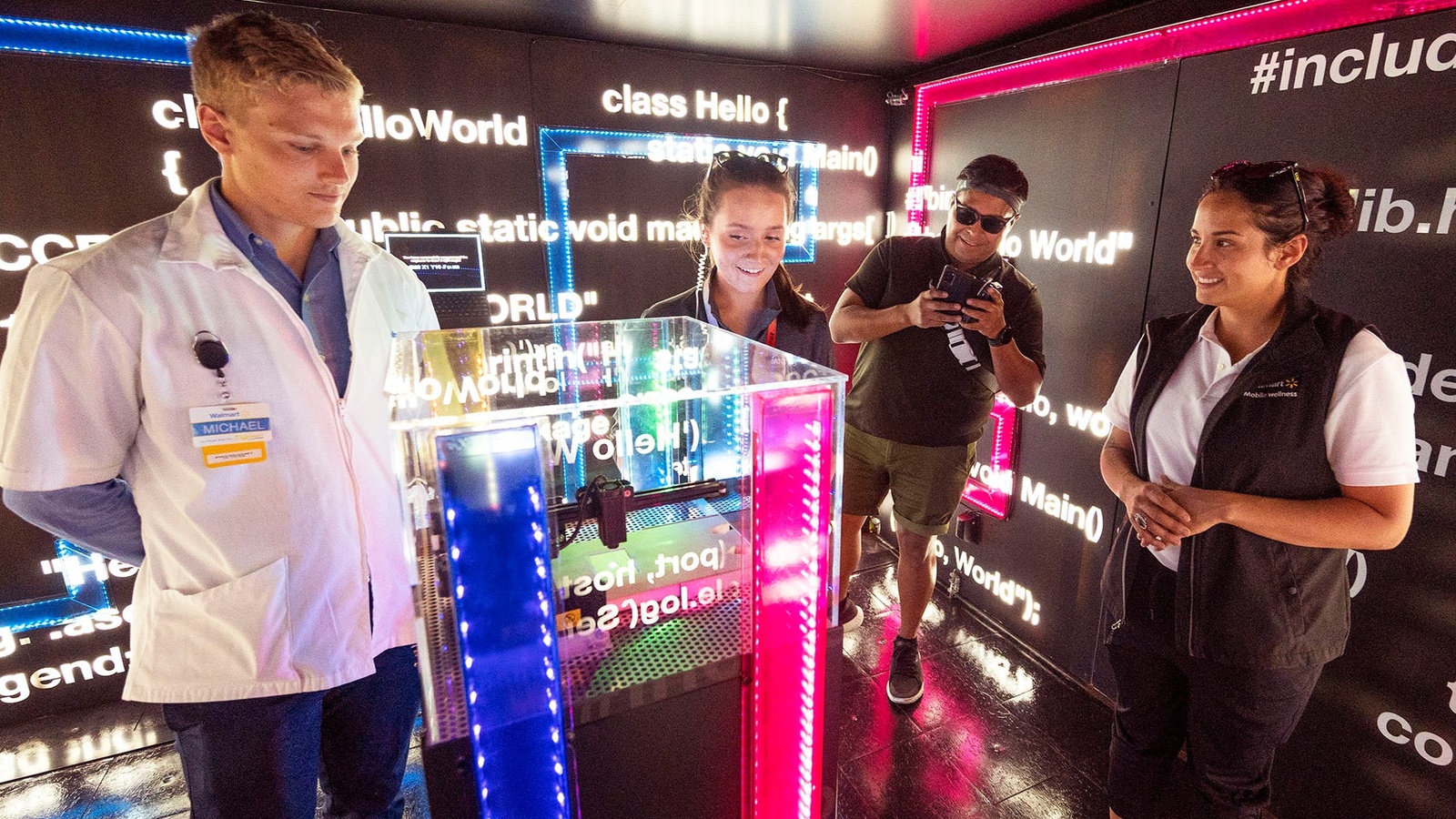
This week, the Creators Wanted Tour Live made its eighth national tour stop—at Walmart’s 9th annual open call for entrepreneurs and manufacturers.
Drawing a crowd: On Tuesday and Wednesday, the Creators Wanted mobile experience was onsite in Bentonville, Arkansas, as 1,100 small and medium-sized business owners pitched their products to Walmart and Sam’s Club for Walmart’s Open Call 2022. The ultimate prize for the business owners? A “gold ticket” to get their products into the stores.
- The two-day Creators Wanted stop drew more than 2,000 people, many of whom jumped at the opportunity to solve puzzles and “race to the future” in the award-winning, immersive escape room.
- In addition to Walmart, Chart Industries, a leading global manufacturer of highly engineered equipment servicing multiple applications in clean energy and industrial gas markets, helped bring the experience to Open Call attendees and the Bentonville community.
- The tour, which aims to generate interest in and excitement about manufacturing careers, is a joint project of the NAM and its workforce development and education partner The Manufacturing Institute.
Committed to manufacturing: The aim of bringing Creators Wanted to this year’s Open Call was to bolster the positive perception of modern manufacturing careers, recruit new manufacturers and connect entrepreneurs and manufacturers with the MI’s workforce-shortage solutions.
- Walmart has committed to spending $350 billion on products made, grown or assembled in the U.S., in addition to the $250 billion the company pledged in 2013 to spend on similar products.
- Total estimated job growth from these investments: 750,000 new American positions by 2031.
Who was there: MI President Carolyn Lee and Vice President of Program Execution Herb Grant were on hand to give manufacturers greater insight into the MI’s growing set of solutions to the dearth of skilled manufacturing labor.
- Also onsite was new Creators Wanted partner FactoryFix, whose team members helped attendee manufacturers source new talent for their businesses and taught job seekers how to build rewarding careers in the industry.
The reaction: “Wherever we go with our Creators Wanted Tour—including here in Bentonville, Arkansas—students, parents, career mentors and even professionals in other industries see what manufacturing can mean and create for futures,” said NAM Managing Vice President of Brand Strategy Chrys Kefalas. “It’s showing there’s dignity, a “cool” factor and massive reward in making things in the United States. Eyes light up.”
The reach: On the second day of the event, more than 3,000 students had already signed up online to learn more about modern manufacturing careers.
Up next: Coinciding with the Dow Great Lakes Bay Invitational on the LPGA tour, the Creators Wanted Tour Live will make its ninth stop in Midland, Michigan, July 13–16.
“It Changed a Lot in My Life”: Tyson Foods’ Workforce Programs
If it hadn’t been for his cousin, Tagba Djato-Bougonou might never have found Tyson Foods.
In 2017, the engineer was working at a bank in Iowa, where he’d ultimately relocated after  emigrating from Togo in West Africa. He was living with his cousin, who was working at Tyson Foods, when the cousin told him about Tyson’s 1+2 Maintenance Program.
emigrating from Togo in West Africa. He was living with his cousin, who was working at Tyson Foods, when the cousin told him about Tyson’s 1+2 Maintenance Program.
“He told me about the good stuff that Tyson has and the 1+2 Maintenance Program and what I could achieve with it,” Djato-Bougonou recalls. “And I thought, ‘OK, I’m going to take a shot with that program.’”
- Djato-Bougonou, who has an engineering background and a graduate degree from a U.S. university, was quickly hired on as part of the initiative.
- 1+2 allows new hires to “earn while you learn” by splitting their workdays between a classroom and hands-on work in a Tyson facility. It gets its name from the one year of education and training participants do, followed by the two years they commit to working for the company.
The results speak for themselves: now a full-time project engineer in Tyson’s Fresh Meats department, Djato-Bougonou is also pursuing a Ph.D. in innovation and project management.
Tyson’s workforce initiatives are increasingly designed to find and reward employees like Djato-Bougonou, who come to Tyson with impressive professional backgrounds earned in other countries.
- “We try to find candidates that, like Tagba, have a deep portfolio outside the U.S. and [whom] we can upskill, with some English and some recertification in the U.S.,” said Tyson Foods Workforce Development Trailblazer Anson Green, who leads economic opportunity efforts, including the in-plant career-development program Upward Pathways.
- In many of the more rural communities that are home to Tyson plants, “there is no large labor pool to draw from,” Green said. Creating unique paths for non-native-born employees to fill skilled-worker roles is a strategy that has helped fill this void.
The success stories are numerous, including many team members who came to the company to apply for one job but, owing to education or work experience garnered internationally, were able to continue on a professional path they thought they’d had to give up.
- One team member, formerly a nurse in her home country, is now developing her English skills and preparing for recertification in the U.S. to work at one of Tyson’s onsite health clinics, according to Green.
- Another team member who now works at a Tyson Foods’ Arkansas plant was previously a legal aide in the Supreme Court of the Dominican Republic. With Tyson’s support, she is also developing her English skills and will be applying to work as a paralegal in the company’s corporate office in Northwest Arkansas.
The last word: For Djato-Bougonou and other Tyson team members who have benefited from an encouraging corporate leadership, the sky’s now the professional limit.
- “I wanted to be part of things which can make a big difference in people’s lives,” Djato-Bougonou said, adding that with the 1+2 Program under his belt, he now feels empowered to do just that. “This program … gave me quite a lot of new skills. It changed a lot of things in my own life.”
How Manufacturers Are Investing in Their Future Workforce
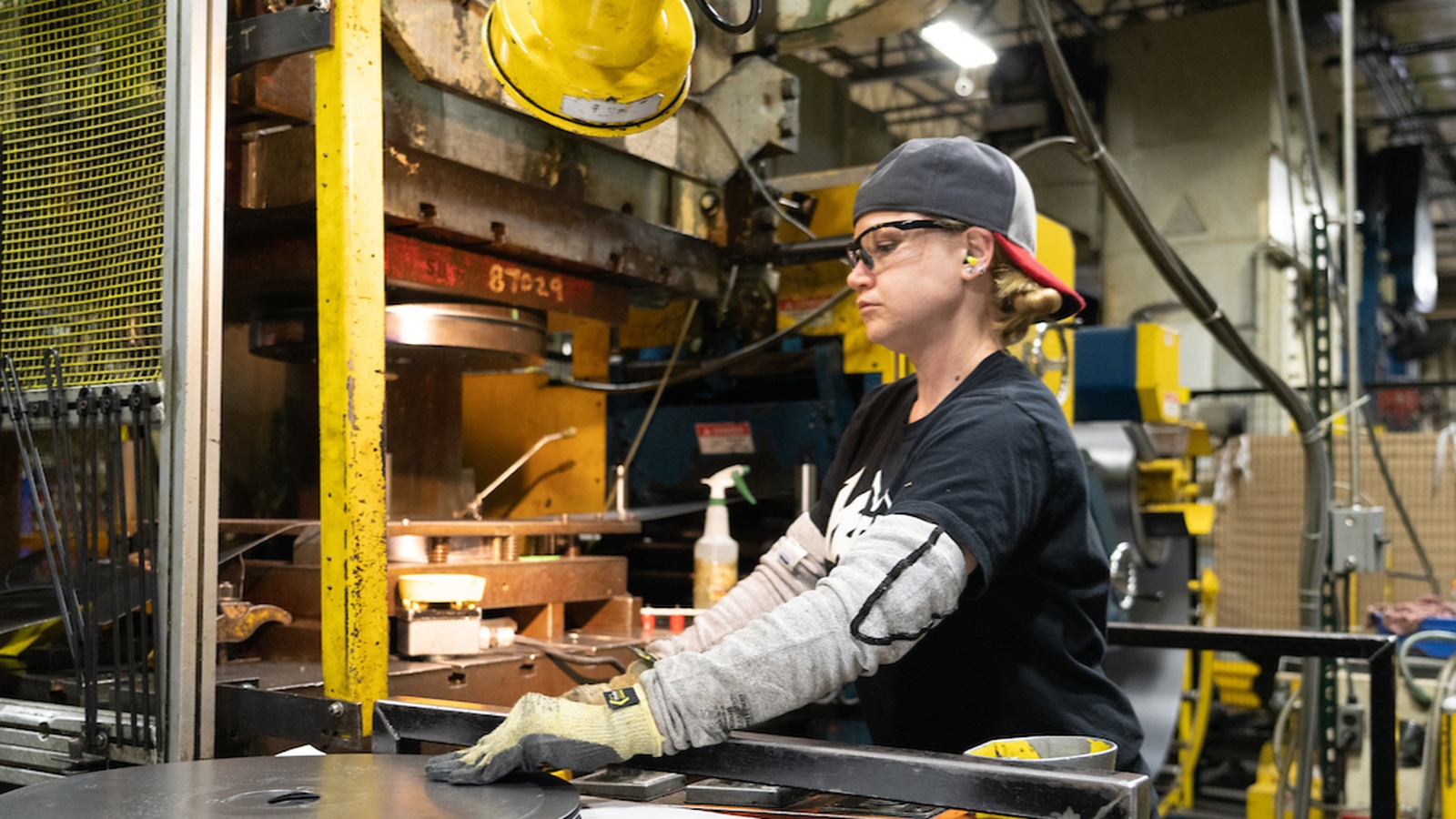
How are manufacturers developing a workforce for a fast-changing industry in a fast-changing decade? Recently, Manufacturing Institute President Carolyn Lee sat down with leaders at Union Pacific Railroad and the Caterpillar Foundation to find out.
Union Pacific Senior Vice President of Corporate Relations and Chief Administrative Officer Scott Moore discussed his company’s efforts to recruit more women and young people to the manufacturing industry. Caterpillar Foundation President Asha Varghese weighed in on Caterpillar Foundation’s efforts to support training opportunities for the military community and introduce high school students to innovative manufacturing careers.
What Union Pacific is up to: The Union Pacific and MI partnership is centered around a program called Careers on Track. This three-year, $3 million initiative is aimed at changing perceptions of the rail industry and encouraging women and youth to pursue careers in the field.
- As part of Careers on Track, Union Pacific and the MI developed Future Creators, a digital STEM curriculum focused on transportation, distribution and logistics.
- Future Creators has been used in more than 24,000 middle schools across the country with 80% of students increasing their knowledge of STEM careers.
How they’re doing it: The MI and Union Pacific created a 3D digital experience of a Union Pacific yard and locomotive that is designed to help women and young people explore technical fields interactively.
- Their other outreach efforts include 30-second PSA-style videos that showcase female employees and their stories to highlight career paths at Union Pacific and events hosted through the MI’s STEP Women’s Initiative.
- Union Pacific has reached more than 250,000 women through this content, demonstrating what women just like them can achieve in the manufacturing industry.
Union Pacific says: “We’ve always known diversity is key at Union Pacific, and to achieve that, there are deliberate things we need to do,” said Moore. “We’re going to have to reach people. Around 90% of our workforce is union, primarily in the field, across 23 states and 7,000 communities. We have to get in those communities—and The Manufacturing Institute gave us the tools to do that well.”
What Caterpillar is doing: The Caterpillar Foundation’s partnership with the MI is investing in workforce readiness and building an empowered and skilled manufacturing workforce.
- This partnership is expanding the MI’s Heroes MAKE America program, which provides certification and career-readiness training to transitioning service members, veterans, military spouses and others who work in or with the armed services.
- One of the partnership’s first efforts was to create a fully virtual program to further Heroes’ reach regardless of physical location.
- The first 100% virtual Certified Production Technician training program was launched in late 2021, in partnership with Texas State Technical College and TRANSFRVR.
In addition, the Caterpillar Foundation is also working with the MI’s FAME program—a 21-month apprenticeship program founded by Toyota that grants certifications and prepares young people for high-skilled jobs in the manufacturing workforce.
- Most recently, the MI and the Caterpillar Foundation created a new FAME chapter in Seguin, Texas.
Caterpillar says: “Caterpillar Foundation focuses on resilient communities, and we understand the importance of investing in local communities in order to ensure that we’re providing them with the right resources, with the right services and with the right skills for employability,” said Varghese. “What really attracted us to the MI is first and foremost that strategic alignment…focusing on that untapped talent.”
The last word: “As a nonprofit, the MI depends on the investments of corporate and philanthropic leaders to tackle the workforce crisis in manufacturing with innovative, exciting workforce solutions,” said Lee. “The MI’s work has expanded to include a full collection of initiatives that not only train individuals for rewarding careers but also provide the thought leadership, best practices and learning networks that manufacturers need to address their workforce issues.”
An ExxonMobil Engineer Makes a Difference
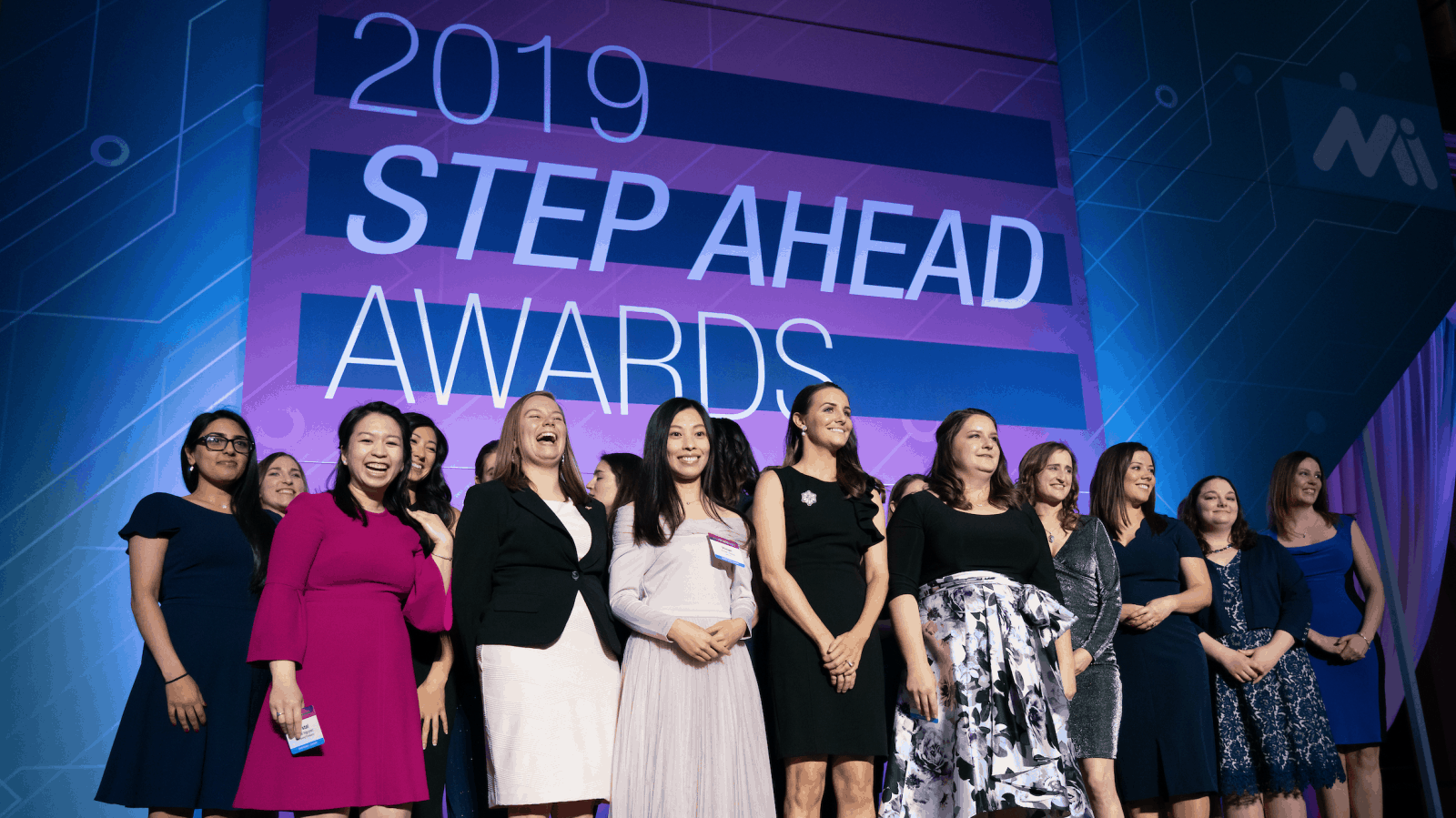
Erika Anderson didn’t always know she wanted to be an engineer. In fact, for most of her childhood, it wasn’t a career path she had even heard about.
- “I didn’t know what engineering was until my senior year in high school,” said Anderson. “I thought an engineer was a train driver, and nobody told me differently.”
A moment of truth: During her senior year, Anderson was told to research the major she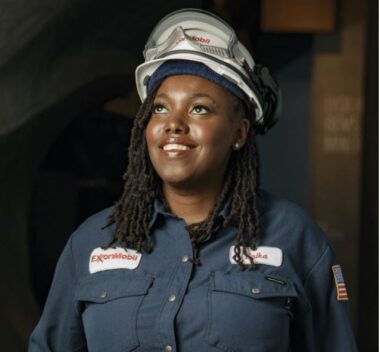 wanted to explore after high school. She searched online, looking for careers for people who liked math and science—and the first thing that came up was engineering.
wanted to explore after high school. She searched online, looking for careers for people who liked math and science—and the first thing that came up was engineering.
- “It was all about people who like a challenge; people who are lifelong learners,” said Anderson. “And as I kept reading, I kept hearing myself in this description. People had always said, you’re smart, you should be a doctor or a lawyer. But nobody ever said engineer.”
Her journey: At Spelman College and the Georgia Institute of Technology, Anderson studied mathematics and mechanical engineering, respectively, while working for GE Aviation and NASA. But it was during a semester spent working at ExxonMobil that she found her passion.
- “ExxonMobil was challenging, and I absolutely loved it,” said Anderson. “I loved the boots, the hard hats, getting my hands dirty. I was able to go out into the field, see all the equipment. I was in awe. I fell in love with it.”
Her job: On her last day in the office during her program at ExxonMobil, the company offered Anderson a full-time job. Today, she’s in her eighth year, working as both the reliability engineer and the reliability coordinator in Baytown, Texas. For ExxonMobil, those are critical roles, tasked with ensuring that the company’s equipment keeps functioning as designed. The way Anderson explains it:
- “Your car comes with a manual and it tells you when you’re supposed to change your oil or rotate your tires. And someone has to figure out how long that oil or those tires can run. I’m not dealing with cars, but I’m dealing with heat exchangers, compressors and pumps. I ensure that this equipment works, that it works reliably, and that we’re making repairs at an interval that keeps your equipment working as it should.”
Making a difference: As a Black woman in manufacturing, Anderson is used to being different from the people around her. She has found herself confronting stereotypes and preconceived notions about who she is. It hasn’t always been easy, but she’s doing vital work—and ensuring that other young women have the opportunity to follow their passions.
An example to others: Anderson was recently recognized by The Manufacturing Institute, the workforce development and education partner of the NAM, as a 2021 STEP Award Emerging Leader. The award is presented to women leaders in science, technology, engineering and production careers who exemplify leadership within their companies and in manufacturing in general.
- She’s also been featured in a book called Everyday Superheroes: Women in Energy about women in different fields in the energy industry; a TV show on CBS highlighting women in STEM; and a project by The Smithsonian and IF/THEN to put up 120 3D-printed statues of women trailblazers in Washington, D.C.
Advice for others: Anderson is an advocate for other women who are considering a career in manufacturing. She encourages women to find mentors, build a network and, above all, be confident.
- “Self-doubt is real, and sometimes, we can be our own biggest critics,” said Anderson. “We have to understand that we are excellent. We are great. And at the end of the day, for any woman coming to this industry—if you’re even thinking about it—there’s something in you. If it were easy, everyone would be doing it.”
The last word: “My grandmother always told me: you’ve got to get comfortable with being uncomfortable. The only way things will change is by having more people like me in the room. We are just as capable as anyone else, and whatever preconceived notions that may exist, I am here to kick those doors down.”
Manufacturers Unveil Landmark Campaign to Close Gender Gap in Workforce
The Manufacturing Institute Launches “35x30” Initiative to Add 500,000 Women to Manufacturing Workforce by 2030
WASHINGTON, D.C. – The Manufacturing Institute, the workforce development and education partner of the National Association of Manufacturers, announced their “35×30” Women’s campaign, an ambitious, industry-wide effort to close the gender gap in manufacturing.
By 2030, the “35×30” campaign will work to close the skills and talent gap in manufacturing by adding half a million women to the industry, increasing women’s representation in manufacturing from 29% today to 35%. The campaign will also lead a nationwide movement designed to change perceptions by engaging face-to-face with emerging leaders and young women students, leveraging more than 1,000 women mentors and collaborating with manufacturers on strategies to attract and retain female talent and broaden the pipeline by supporting women throughout their education.
“For nine months in a row now, manufacturers have had more 800,000 open jobs, and we can’t make meaningful progress toward filling those jobs without closing the gender gap,” said MI President Carolyn Lee. “The 35×30 campaign is an unprecedented plan to strengthen our workforce and build the talent pipeline. We are thrilled to see the industry unite and recognize the power of women in the workforce. This initiative will help many women of all ages find their way into a successful, rewarding career in modern manufacturing, and I can think of no better day to make this announcement than on International Women’s Day.”
The biggest challenge facing manufacturers continues to be the growing workforce crisis. Studies show that manufacturers can close the skills gap by 50% by bringing 10% more women into the industry. Women account for about half of the U.S. labor force but represent less than one-third of the manufacturing workforce.
As part of the campaign, the MI announced an initial sponsorship of $250,000 from Arconic Foundation to support programs and activities in 2022 and beyond. The MI also recognized Stewards of the “35×30” campaign, stressing their support in narrowing the gender gap facing manufacturing in America.“35×30” Campaign Stewards include:
- Ryan Kish, President and Treasurer, Arconic Foundation
- Dee Dee Fultz, GM of Assembly, Harley-Davidson Motor Company
- Erika Peterman, Senior Vice President, Chemical Intermediates, North America, BASF
- Courtney Silver, President, Ketchie Inc
- Keira Lombardo, Chief Administrative Officer, Smithfield Foods
The “35×30” campaign will add to the MI’s ongoing work to bring women into the manufacturing workforce. Launched in 2012, the STEP Women’s Initiative is the nation’s marquee program to close the gender gap in manufacturing. STEP consists of the STEP Ahead Awards and professional leadership development program as well as regional STEP Forward events throughout the year. The initiative works to foster a 21st-century manufacturing workforce by elevating and inspiring women in the manufacturing industry through recognition, research and leadership, as well as by motivating alumnae to pay it forward by mentoring the next generation. Click here to learn more about the “35 x 30” campaign.
-The MI-
The MI grows and supports the manufacturing industry’s skilled workers for the advancement of modern manufacturing. The MI’s diverse initiatives support all workers in America, including women, veterans and students, through skills training programs, community building and the advancement of their career in manufacturing. As the workforce development and education partner of the NAM, the MI is a trusted adviser to manufacturers, equipping them with resources necessary to solve the industry’s toughest challenges. For more information on the MI, please visit www.themanufacturinginstitute.org.
2022 STEP Ahead Award Winners Announced

Word is out – the recipients of this year’s STEP Ahead Awards have been announced.
What’s happening: Bestowed each year by the Manufacturing Institute, the NAM’s workforce development partner, the STEP Ahead Awards recognize outstanding women in the fields of science, technology, engineering and production (STEP). This year marks the honor’s 10th anniversary.
Why it matters: “The STEP Ahead Awards are central to the industry’s efforts to recognize and empower women,” said MI President Carolyn Lee. “Manufacturing is averaging more than 800,000 open jobs a month in the past year, and we can’t close that gap without closing the gender gap.”
- Recipients “serve as role models and have their own multiplier effect on the number of women in the workforce, paying it forward to help others find their way into a successful, rewarding career in modern manufacturing,” Lee said.
- Agreed 2022 STEP Ahead Chair Denise Rutherford: “The 2022 STEP Ahead Honorees and Emerging Leaders are excellent representatives of the exciting opportunities available in manufacturing. These remarkable women and the leadership they show help inspire the next generation of female leaders to consider careers in manufacturing.”
Gala to follow: The 130 recipients of the 2022 awards will be honored at an in-person Aril 28 gala in Washington.
See the full list of 2022 award recipients here.
Ducommun’s #MFGDay21 Was a Roaring Success
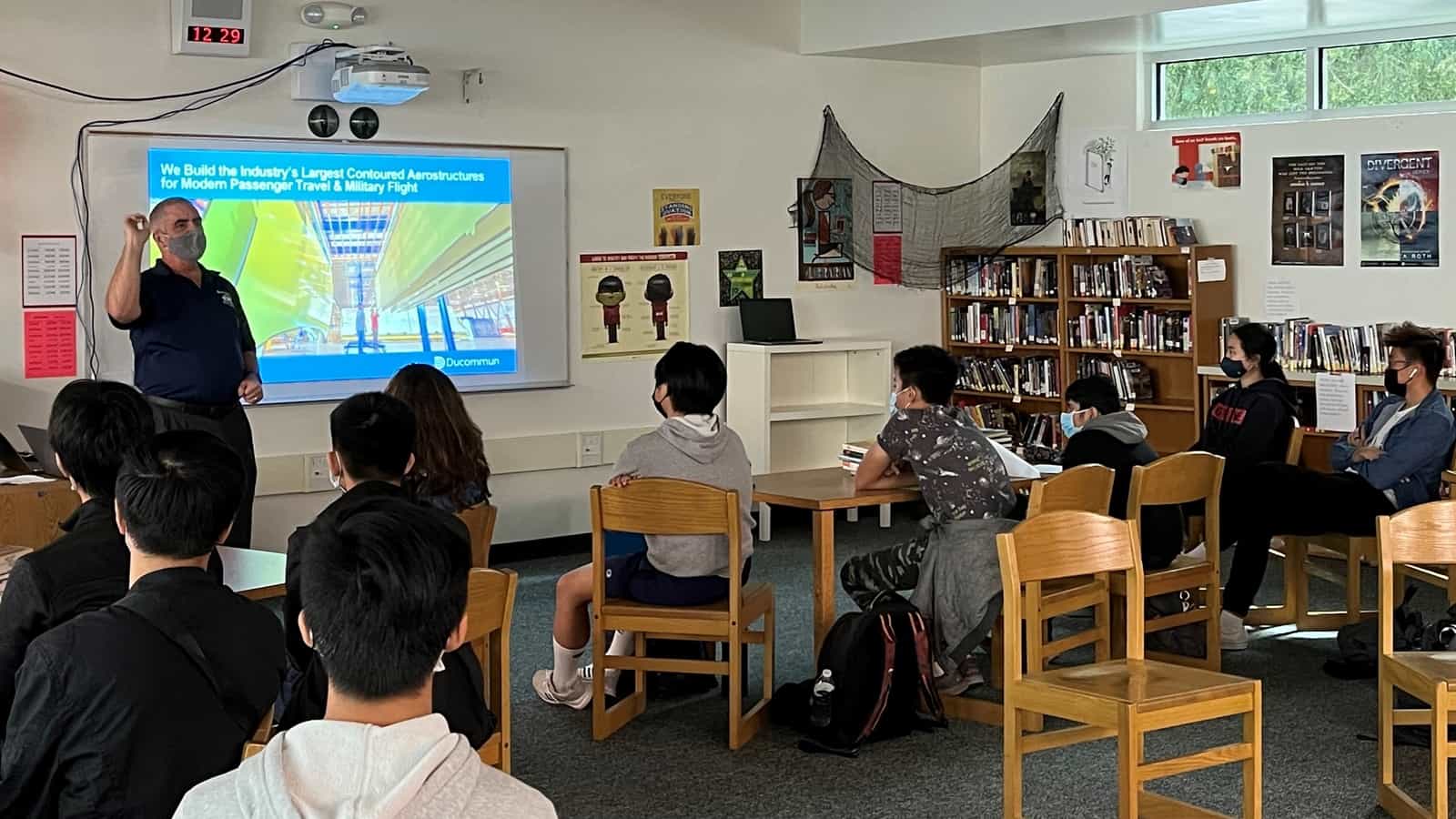
It would have been an impressive feat no matter what, but Ducommun’s achievement of a robust and highly attended MFG Day 2021 was made all the more remarkable by the fact the company had been an NAM member for just nine months.
MFG Day, an annual program of the NAM’s nonprofit workforce development and education partner, The Manufacturing Institute, highlights the opportunities and potential of modern manufacturing careers by encouraging thousands of companies and educational institutions around the nation to open their doors to students, parents, teachers and community leaders.
“As a leader in innovative manufacturing, Ducommun supports National Manufacturing Day, as well as other education and community-based STEM programs and initiatives, that nurture and develop the next generation of creators, builders, technicians and innovators,” said Chonta Salts, Ducommun corporate HR business partner. “Our goal for MFG Day was to engage with students, parents and educators to broaden their understanding of modern manufacturing and to highlight the range of full-time opportunities, internships and part-time summer jobs available to them.”
Their MFG Day: Ducommun, a 172-year-old Santa Ana, California-based provider of technology-driven structural and electronic solutions for the aerospace, defense and industrial markets, coordinated employee and representative visits with 11 high schools and colleges nationwide. Each school is local to one of Ducommun’s U.S. manufacturing performance centers.
- Events were held in person at Ducommun, in classrooms at local schools and online through livestream. Ducommun leadership teams, engineers, technicians and production team members engaged with students about what a career in modern manufacturing is really like—and how much room it offers for professional growth and advancement.
- “Employees shared their own success stories: starting out in entry-level production positions, completing training programs to advance to technical, engineering or other professional positions and what they do in their current role,” said Ducommun Vice President and Chief Human Resources Officer Rose Rogers. “I think that’s a key component of rolling it out. You have to engage with students at their level. By having our employees connect with the students, they were able to ask questions directly to our employees.”
What they did: Ducommun’s MFG Day success was bolstered by the fact that the company has long been involved in sponsoring local-school science, technology, engineering and math (STEM) activities. So come October, it already had many connections at nearby schools.
- Ducommun team members attended the virtual training sessions offered on the MFG Day section of creatorswanted.org,Salts said.
- Using the site’s resources page, Salts worked with the company’s communications team to transform their standardized presentation into one for high school audiences that could be easily customized by HR leaders responsible for local events.
- Rogers and Salts “got buy-in and feedback from senior leadership” early in the planning process.
- They ensured their events were dynamic, interactive and interesting to the students because “we didn’t want to sit them in a conference room, watch a presentation and wish they were back at school!” Rogers said, with a laugh.
Facts and figures: Ducommun started its MFG Day planning “months” in advance, Salts said, and the work paid off. Here are some of the specific results:
- More than 500 students attended and participated in Ducommun’s MFG Day events.
- There were five in-school presentations by Ducommun team members.
- The day included 17 student presentations.
- There were six onsite visits by students to Ducommun performance centers.
- The day had one virtual presentation.
The payoff: Ducommun’s participation in MFG Day is part of its commitment to build the next generation of creators and innovators, Salts said. Though it’s still too early for the company to have reaped the workforce rewards of its autumn outreach, Rogers said it has received a great deal of interest from students about full- and part-time jobs after graduation. Ducommun expects to fill many open positions in late spring and summer 2022.
- “We invested in MFG Day because one of our core beliefs and commitments is to support the communities where we live and work,” Rogers said. “We emphasized that working at Ducommun wasn’t going to be just a job—this could be a long-term play for students because they can build a career with us. Being able to engage with them was invaluable.”
For more information on MFG Day and how to host a successful one next year, visit www.creatorswanted.org/resources/.
Parts Life, Inc. Family of Companies Builds Employee Homeownership

At the Parts Life, Inc. family of companies (Parts Life, Inc.; DeVal Life Cycle Support, LLC; and LC Engineers), they’re not just working to solve product obsolescence, they’re also making it possible for employees to put down roots in their community.
The company, based in Moorestown, New Jersey, works with all military branches, original equipment manufacturers and prime contractors in aerospace and defense to manufacture critical components that extend the life of mission-critical assets. Through a novel initiative, Parts Life also offers loans to employees to help them buy homes.
How it started: The Help U Buy program, or HUB, was the brainchild of founder and CEO Sam Thevanayagam, who knows just how important a home can be.
- “The primary way that you create capital for yourself is to buy your first home,” said Thevanayagam. “I downsized my first home and bootstrapped Parts Life. I used my home as collateral to fund the acquisition of another company. Most things are funded by using your home as collateral.”
Thevanayagam thought up the program three years ago. After a few conversations with his Human Resources Department, he formalized the initiative and set it in motion.
How it works: The company offers interested employees a forgivable loan, and the employees work it off through service over the course of five years, with no additional responsibilities. According to Thevanayagam, more than 25 people have taken advantage of the program since he created it—including 17 employees in the last year alone.
- “We want every single person who works for us to be part of the American Dream,” said Thevanayagam. “When you own your first home, that sets you up for everything else. It gives you stability.”
The impact: Thevanayagam believes that the culture of a company is critical and that the HUB program speaks to Parts Life’s commitment to its employees. Parts Life also focuses on training designed to strengthen employees’ skill sets. The company frequently fills new positions by promoting from within as a demonstration of its investment in its workers.
- “It’s mutually beneficial, because it’s helping people become more valuable to the organization and themselves,”said Thevanayagam.
The last word: “My purpose is to create an environment where others can meet their God-given potential,” said Thevanayagam. “It’s a CEO’s responsibility to have the right culture. At the end of the day, I’m the bearer of that culture. I help create it, defend it. I take that job very seriously. It’s like gardening; you have to create the environment and make sure you’re working on it carefully so people have chance to grow and bloom.”
A Helicopter Mechanic’s Manufacturing Career Takes Off
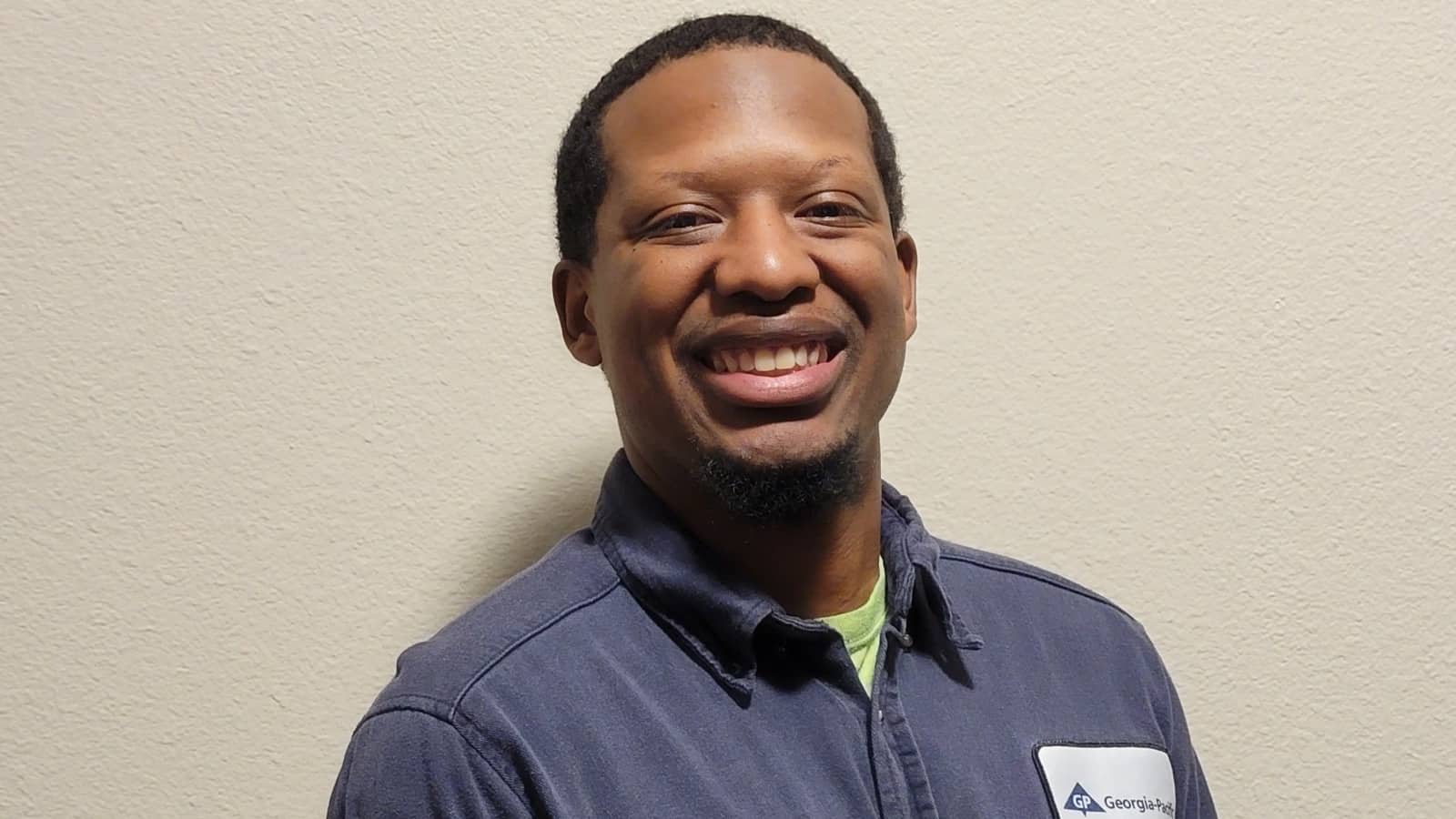
Marsalis Leonard didn’t grow up in a gearhead family, but from the beginning of his eight years as a helicopter mechanic in the U.S. Army, he was immersed in a world of skills he would never have anticipated seeking out on his own.
- “The Army was my introduction to mechanics,” said Leonard. “It taught me how different machines and processes work together, but it also taught me how to grasp hands-on knowledge and put it to use.”
A new career: That kind of experience served Leonard well when he transitioned out of the army in 2020. He had considered working in civilian aviation, but the process would have required additional education and a range of specific certificates. For Leonard, more school wasn’t a priority—and when he learned about the Manufacturing Institute’s Heroes MAKE America program at Fort Campbell, Kentucky, it seemed like a perfect opportunity to get started in a new field by putting his existing capabilities to use.
- “I wanted to jump into something with the skills I already had,” said Leonard. “Heroes MAKE America seemed like a great place to enhance my skills and turn them into a new career.”
An immersive program: The MI—the workforce development and education partner of the NAM—designed Heroes MAKE America as an integrated certification and career-readiness training program that helps prepare transitioning service members, veterans, National Guard members, reservists and military spouses for careers in manufacturing. The initiative offers in-person trainings and remote training options, as well as career support and placement. So far, the program has a 90% placement rate with graduates in 42 states across the country.
A learning opportunity: While Leonard brought plenty of his own experience to the table, Heroes MAKE America still offered valuable information and practical training in industrial maintenance that he continues to use today.
- “It was very enlightening,” said Leonard. “Heroes gave you an education in basic electronics, pneumatics, hydraulics and mechanics. It taught you to read schematics and diagrams, which was probably the first thing I was able to grasp. It was very hands-on.”
A new path: Through his experience in Heroes, Leonard was hired as a maintenance technician at a Waxahachie, Texas, facility owned by Georgia-Pacific—a pulp and paper manufacturer based in Atlanta, Georgia. While the role may be different from his experience in the military, the Heroes program prepared him to take on his new challenges.
- “I learned an insane amount,” said Leonard. “At first, it seemed overwhelming the amount I didn’t know. But I also was able to see people who have been in the industry for years—and they started out as kids with no experience. So, you work hard, pay attention, ask questions and learn from your mistakes. You’ll learn something—and you’ll use that knowledge.”
Get involved: Want to support Heroes MAKE America? Click here to learn more.
